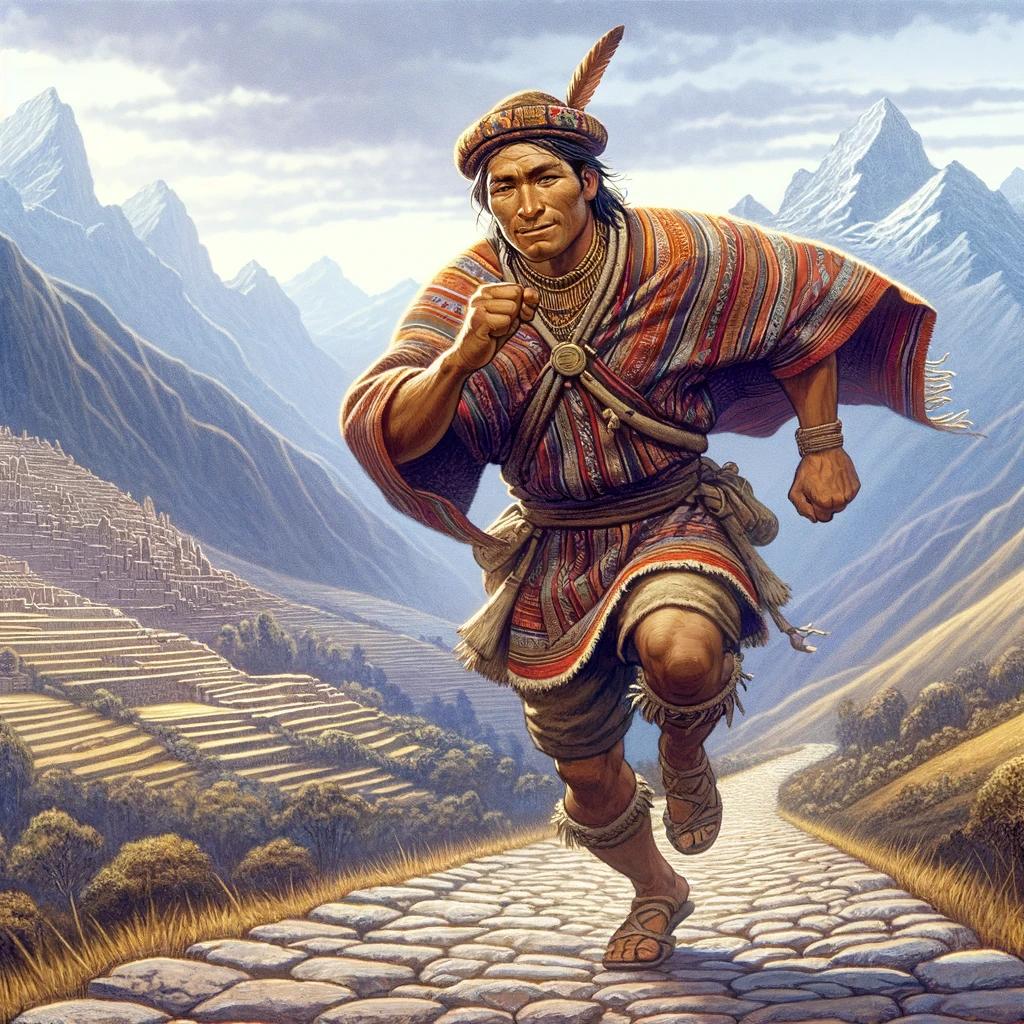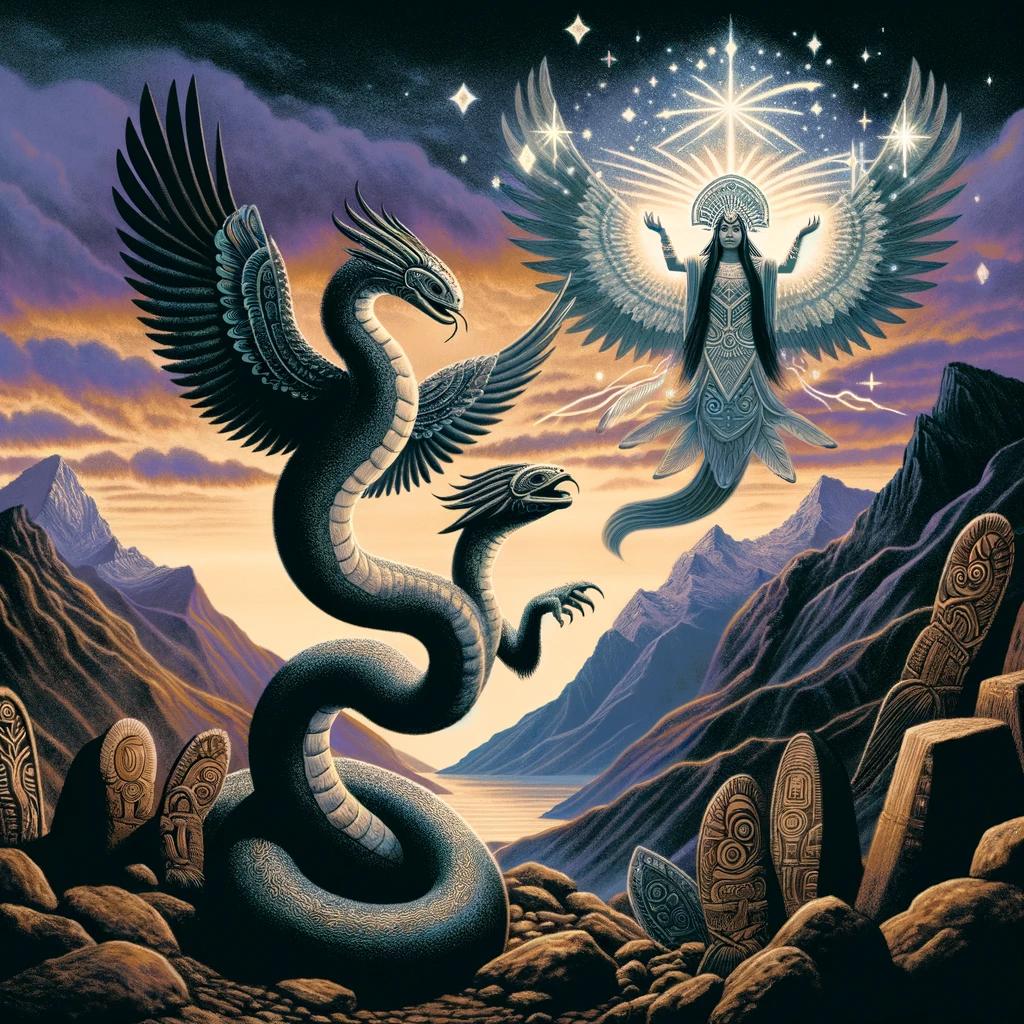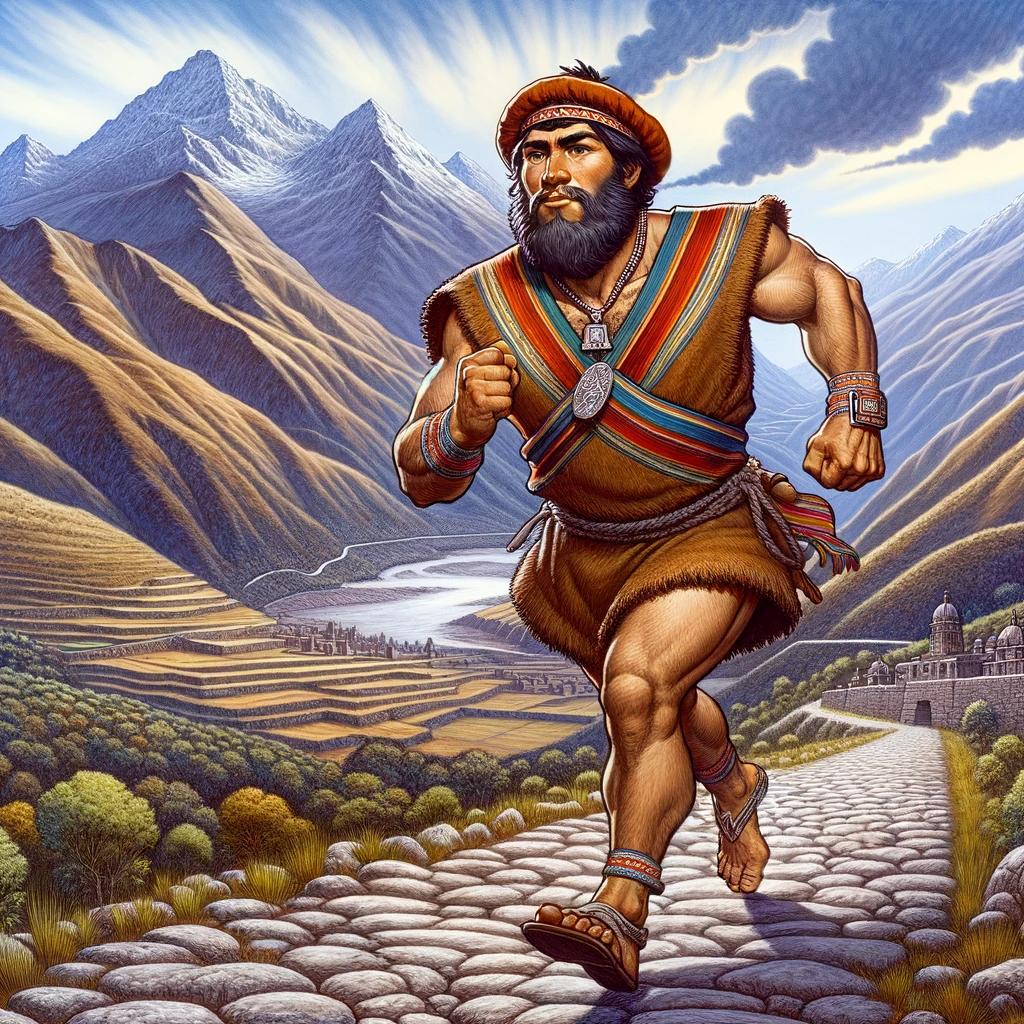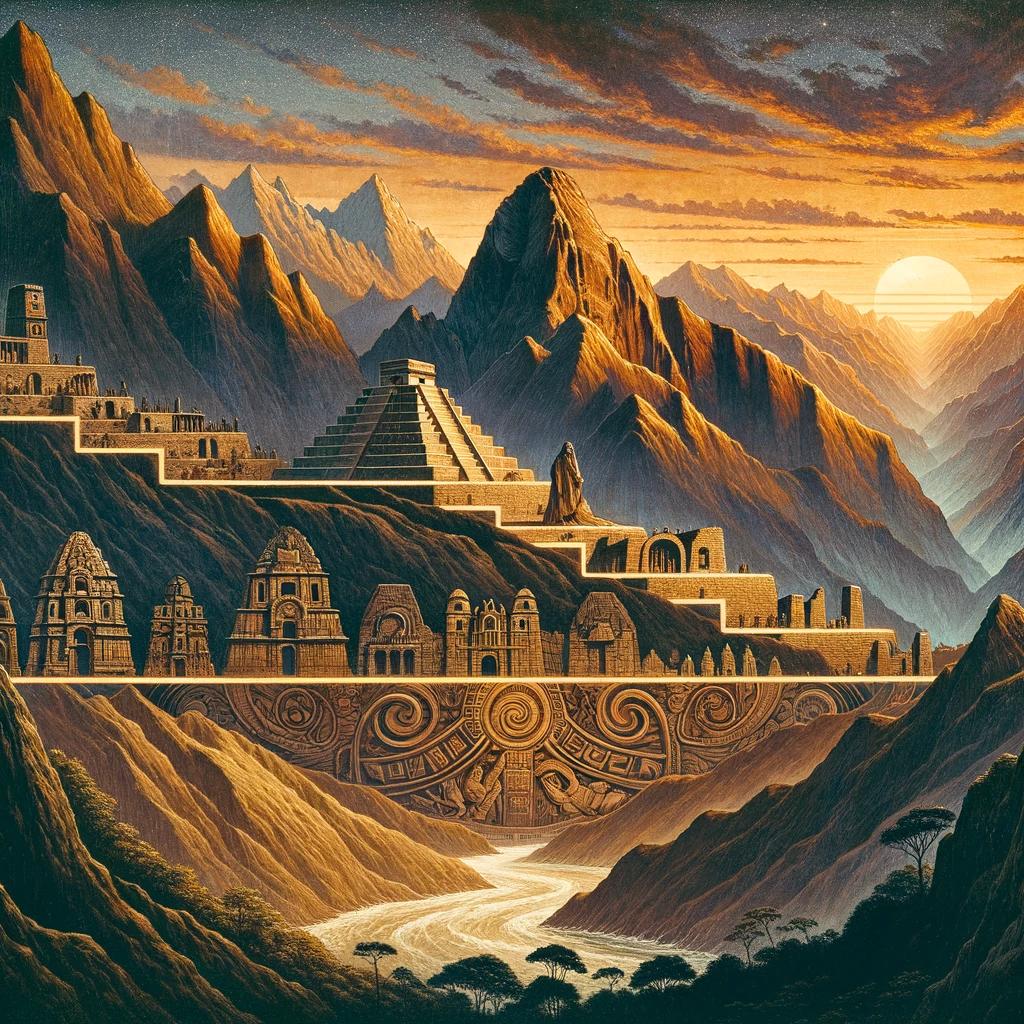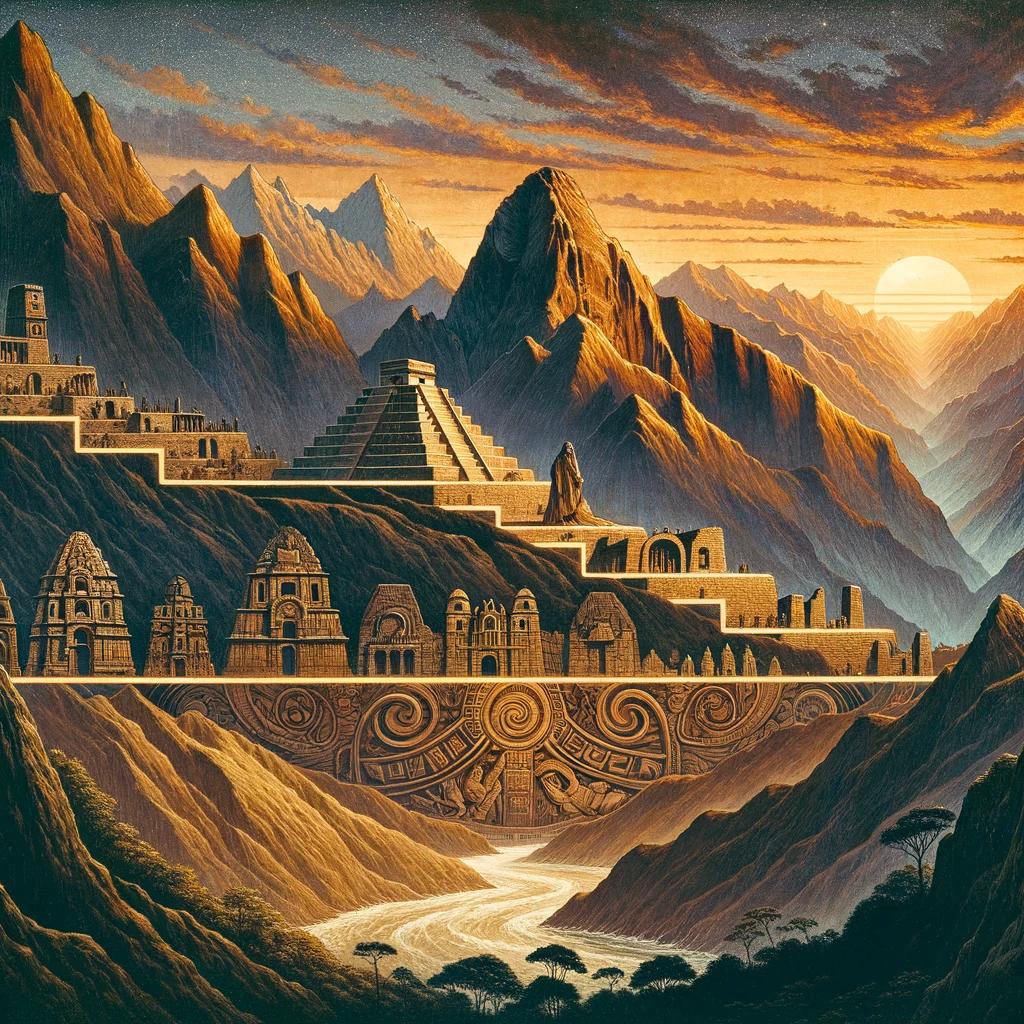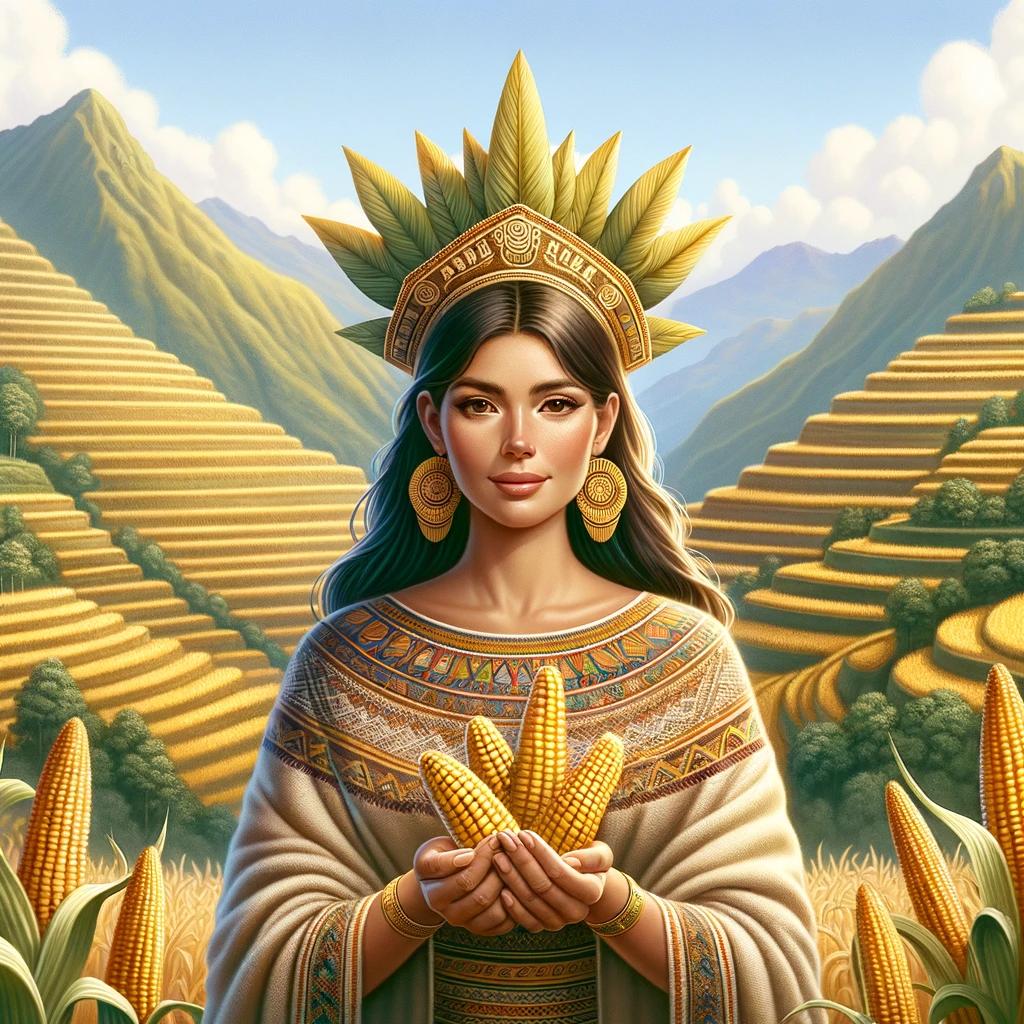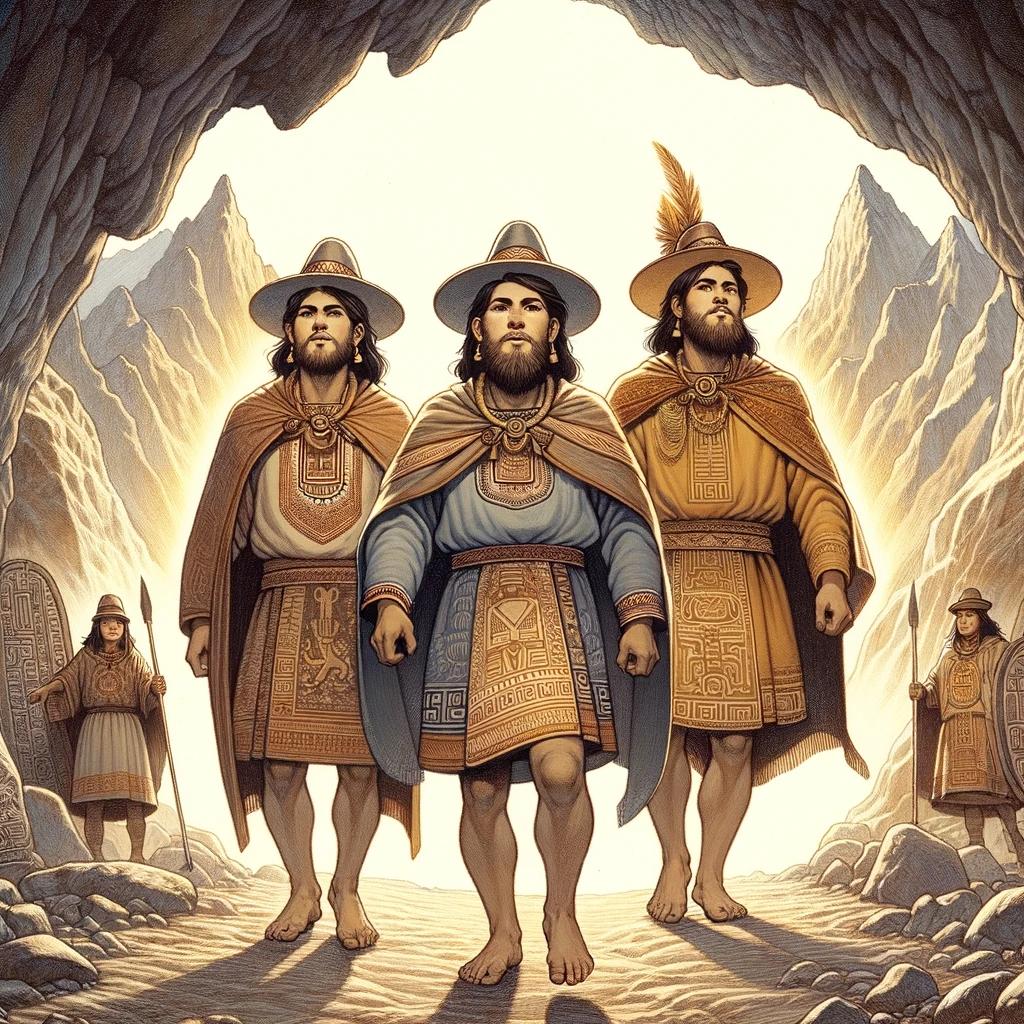Where was the Inca Empire located: Unveiling the Ancient Civilization’s Geographic Roots
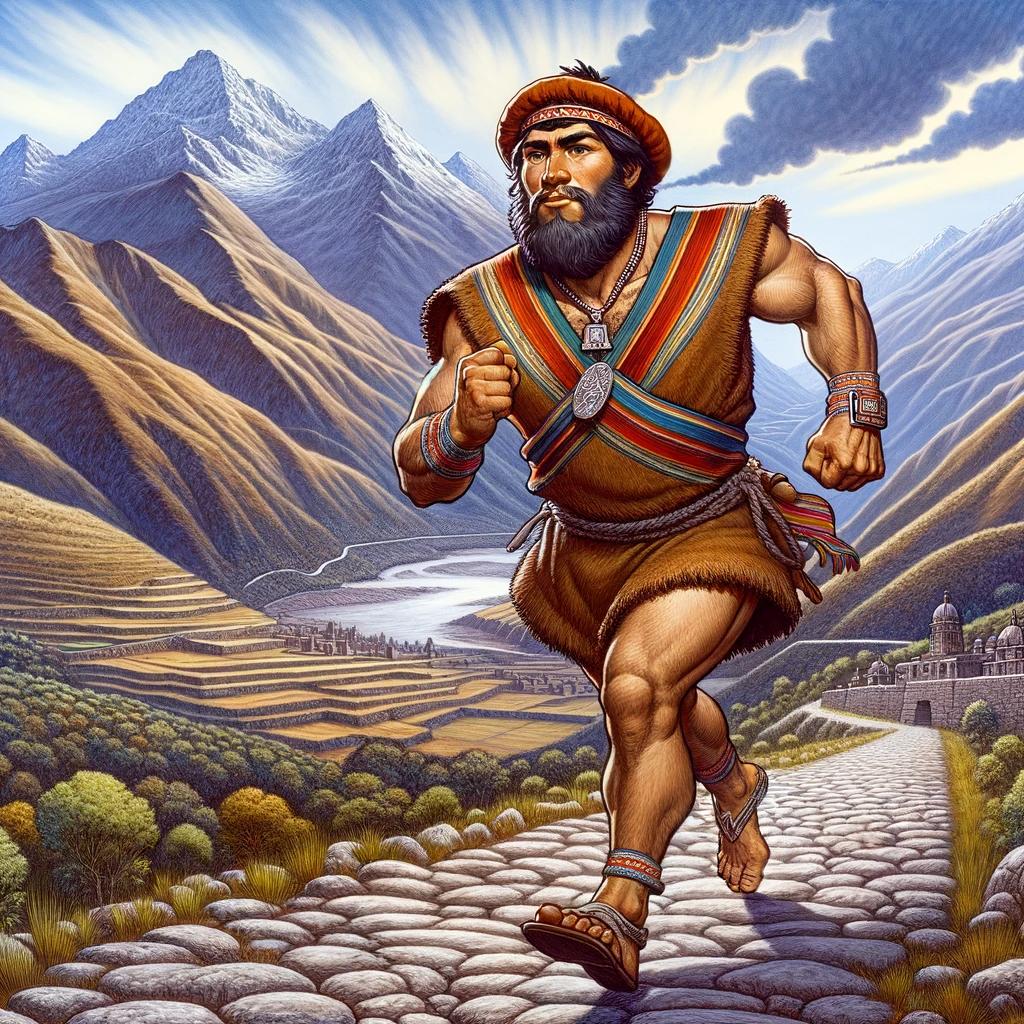
The Inca Empire, one of the most renowned civilizations in history, was located in Western South America. Situated along the Andes, the heartland of the empire was marked by its magnificent mountainous landscape.
The capital city of Cusco served as the cradle of Inca power and cultural influence. With a rich history and lasting legacy, the empire’s territorial expansion and governance, unique society and customs, encounters with outside forces, remarkable architecture, and prosperous economy continue to captivate our curiosity and admiration.
The Inca Empire’s mysterious demise only adds to its allure.
The Inca Empire: A Glimpse into its Historical Significance
The Inca Empire, one of the most remarkable civilizations in history, holds significant historical importance. This section explores its origins, cultural marvels, and enduring legacy.
Origins and Early Development
The roots of the Inca Empire can be traced back to the early 13th century when the Inca people emerged as a small community in the Peruvian highlands. Over time, they expanded their influence through strategic alliances and military conquests, establishing the foundations for their vast empire.
Inca Civilization: Cultural and Architectural Marvels
The Inca civilization flourished in various aspects of life, including art, architecture, agriculture, and social organization. Their engineering marvels, such as the impressive stone structures of Machu Picchu and the intricate road systems, continue to awe modern-day observers.
The Inca’s mastery of terraced agriculture and their ability to cultivate crops at high altitudes showcased their ingenuity and adaptability.
Legacy and Influence: The Inca Empire’s Lasting Impact
The demise of the Inca Empire at the hands of the Spanish conquistadors did not diminish its lasting impact. The empire’s cultural and architectural achievements left a profound influence on subsequent generations.
The Quechua language, preserved by the Inca people, still resonates in the Andean region. The Inca’s sustainable agricultural practices and reverence for the natural world continue to inspire environmentalists today.
Geographic Landscape: Exploring the Inca Empire’s Territory
The geographic landscape of the Inca Empire played a crucial role in shaping its development and influence.
Situated in Western South America, the empire spanned a vast territory, encompassing diverse geographical features.
Inca Location: Situated in Western South America
The Inca Empire was located in Western South America, extending along the Pacific coast of the continent. Its borders stretched from present-day Colombia in the north, through Ecuador, Peru, Bolivia, and reaching parts of Argentina and Chile in the south.
Along the Andes: The Mountainous Heartland of the Empire
The Inca Empire’s heartland was nestled along the majestic Andes mountain range. These towering peaks provided a natural fortress, offering protection and strategic advantages for the Inca civilization. The Andes also offered a rich diversity of ecosystems, from snow-capped mountains to fertile valleys, allowing the Inca to thrive in varied landscapes.
Cusco: The Capital City and Cradle of Inca Power
Cusco, known as the “navel of the world” to the Inca, served as the capital city and the epicenter of Inca power. Located in present-day Peru, Cusco was a highly significant cultural and political hub.
With its intricate architectural marvels, including the legendary Temple of the Sun, Cusco showcased the Inca’s mastery in city planning and engineering.
Exploring the Inca Empire’s geographic territory reveals the empire’s adaptability to various landscapes, from high altitude regions to coastal plains.
The strategic positioning of Cusco and the protection provided by the Andes mountains played crucial roles in the empire’s success and longevity.
Expansion and Governance: The Rise of the Inca Empire
The Inca Empire emerged as a formidable force under the visionary leadership of Pachacuti Inca Yupanqui.
His strategic military campaigns and diplomatic skills enabled the empire’s rapid expansion and consolidation of power.
Pachacuti Inca Yupanqui: The Visionary Emperor
Pachacuti Inca Yupanqui’s extraordinary vision and leadership transformed the Inca Empire into a dominant force. Through his military prowess and strategic planning, he expanded the empire’s borders, incorporating numerous territories and tribes into the realm.
Pachacuti’s innovative strategies and ability to establish alliances played a crucial role in the empire’s expansion.
Inca Political Structure: Understanding the Imperial Administration
The political structure of the Inca Empire was highly organized and centralized. At the top of the hierarchy was the Sapa Inca, who held absolute authority. Below the Sapa Inca were nobles known as the aristocracy, who held important administrative positions and governed various provinces.
The Inca’s political system operated on a principle of reciprocity, where loyalty to the empire was rewarded with privileges and resources. It facilitated efficient governance and ensured the empire’s stability.
Administration and Infrastructure: Building an Empire
The Inca Empire’s rapid expansion required an efficient administrative structure and infrastructure. The empire developed an extensive network of roads, known as the Qhapaq Ñan, which connected different regions and facilitated communication, trade, and the movement of armies.
Administrative centers were established throughout the empire, with Cusco serving as the capital and administrative hub. These centers ensured effective coordination and governance, allowing for the collection of taxes, maintenance of order, and enforcement of laws.
The empire’s administrative system also included a sophisticated record-keeping method called the quipu, which used a series of knotted strings to encode information and facilitate communication.
In summary, the expansion of the Inca Empire was driven by the visionary leadership of Pachacuti Inca Yupanqui, who skillfully employed military strategies and fostered alliances.
The empire’s political structure ensured effective governance, with the imperial administration maintaining order and overseeing the vast territory. Through the development of a robust infrastructure and administrative systems, the Inca Empire flourished and solidified its dominance in the region.
Inca Society: People, Language, and Customs
Inca society was characterized by its unique traditions, rich cultural practices, and distinct way of life. Understanding the people who comprised the Inca Empire provides valuable insights into their fascinating civilization.
Inca People: Discovering their Unique Traditions and Lifestyle
The Inca people, known as the “Children of the Sun,” were deeply connected to their natural surroundings and held a profound reverence for the natural world. They embraced a communal way of life, where cooperation and collective efforts played a fundamental role.
The Inca society was organized hierarchically, with the Emperor at the pinnacle of power. They believed that the Emperor was the son of Inti, the Sun God, and held divine authority over the empire.
The nobility and priests played crucial roles in maintaining societal order and ensuring the spiritual well-being of the empire.
Women held esteemed positions within Inca society. They were revered as the bearers of life and played important roles in agriculture, weaving, and the transmission of cultural practices to future generations.
Quechua: The Language of the Inca Civilization
The Inca civilization had a unique language known as Quechua. It served as a unifying force, connecting people across the vast territories of the empire. Quechua was primarily an oral language, passed down through generations, but the Inca also used a system of knotted cords, known as quipu, for record-keeping and communication.
Quechua became an essential tool for governance, trade, and cultural expression within the Inca Empire. It fostered a sense of shared identity and facilitated communication across diverse regions and ethnic groups.
Cultural Practices and Religious Beliefs: The Inca Perspective
The Inca people were deeply spiritual and possessed a complex belief system that centered around the worship of nature and ancestral spirits. They believed that everything in the natural world had a spiritual essence and deserved reverence.
The Inca performed elaborate rituals and ceremonies to honor their gods and express gratitude for the abundance of the earth. These rituals often involved offerings, sacrifices, and the participation of the entire community.
The Inti Raymi, or Festival of the Sun, was one of the most significant celebrations, dedicated to Inti, the sun deity.
Moreover, the Inca had a strong connection with their ancestors, whom they believed continued to guide and protect them.
They practiced ancestor veneration and preserved the mummies of their deceased leaders, which were considered sacred.
Overall, the Inca society’s customs, language, and religious beliefs were intricately intertwined, shaping their way of life and reinforcing their sense of unity and connection with the natural world.
Conquests and Resistance: Interactions with Outside Forces
Conquests and resistance played a pivotal role in the history of the Inca Empire. The arrival of the Spanish, led by Francisco Pizarro, marked a significant turning point in the fate of the Incas.
The encounters between the Inca and Spanish forces would result in a clash of empires that ultimately led to the downfall of the Inca civilization.
Spanish Arrival: Francisco Pizarro and the Inca Encounter
The Spanish arrival in the Inca territory brought them face to face with an empire of immense wealth and power.
Francisco Pizarro, a Spanish conquistador, saw the opportunity to exploit the riches of the Inca Empire. In 1532, Pizarro and his small group of conquistadors captured the Inca ruler Atahualpa, triggering a chain of events that would reshape the course of history.
Clash of Empires: Spanish Conquest and the Fall of the Inca
The clash of empires between the Spanish and the Inca was a battle of unequal forces. The Spanish, armed with advanced weaponry, overwhelmed the Inca warriors. Despite the valiant resistance led by Inca generals, such as Manco Inca and his descendants, they were unable to withstand the Spanish onslaught.
The Spanish ultimately captured Cusco, the Inca capital, solidifying their control over the empire and marking the end of Inca rule.
The Aftermath: Effects of Spanish Colonization on Inca Heritage
The aftermath of Spanish colonization had a profound impact on Inca heritage.
The Spanish imposed their own language, religion, and social structures on the conquered Inca population. They plundered the empire’s vast wealth, including its gold and silver treasures, sending them back to Europe.
Additionally, diseases brought by the Spanish, such as smallpox, ravaged the Inca population, decimating their numbers and further undermining their resistance.
The Spanish conquest and its aftermath forever altered the course of the Inca Empire.
Despite the oppressive conquest, remnants of Inca heritage are still evident in modern-day South America, as indigenous communities strive to preserve their cultural identity and reclaim their ancestral heritage.
Remarkable Sites: Exploring Inca Architecture and Heritage
Delving into the rich architectural marvels and cultural heritage of the Inca Empire unveils a world of remarkable sites that continue to inspire awe and fascination today.
Machu Picchu: The Iconic Sanctuary of the Inca
Perched high in the Andes Mountains, Machu Picchu stands as a testament to the ingenuity and mastery of Inca engineering. This majestic citadel, shrouded in mist and surrounded by breathtaking landscapes, served as a spiritual center and sanctuary for the Inca rulers.
Its intricate stone structures, terraces, and ceremonial plazas offer a glimpse into the advanced architectural techniques and sacred beliefs of the Inca civilization.
Urban Centers: Cities and Towns within the Inca Empire
- Cusco: As the capital city of the Inca Empire, Cusco was a vibrant hub of political, economic, and cultural activity.
Its stonework marvels, such as the fortress of Sacsayhuaman and the Qorikancha temple, reflect the power and grandeur of the Inca civilization.
- Ollantaytambo: Situated in the Sacred Valley, Ollantaytambo boasts impressive stone terraces and imposing fortress walls that served as a strategic military stronghold and religious center.
- Pisac: This ancient town features stunning agricultural terraces, intricate stone masonry, and a vibrant marketplace where the Inca people engaged in trade and cultural exchange.
Sacred Sites and Ceremonial Centers: Insights into Inca Spirituality
The Inca’s deep spiritual connection with nature is evident in their sacred sites and ceremonial centers, where rituals and ceremonies were performed to honor deities and celebrate important events.
- Sacsayhuaman: This fortress complex, located on the outskirts of Cusco, showcases massive stone walls meticulously fitted together without the use of mortar, demonstrating the Inca’s exceptional stone-cutting and construction skills.
- Inti Raymi: Held annually on June 24th, this grand sun festival takes place in Cusco and recreates ancient Inca rituals, providing a captivating insight into their religious traditions and reverence for the sun god.
- Pachacamac: Located near modern-day Lima, this sacred site was a significant pilgrimage destination and oracle center, where the Inca sought spiritual guidance and connected with their ancestors.
Exploring these remarkable sites allows us to appreciate the Inca Empire’s architectural ingenuity, cultural richness, and profound spiritual beliefs.
Amidst the breathtaking landscapes of Western South America, the legacy of the Inca endures, inviting us to delve deeper into their fascinating history.
Economy and Resources: The Wealth of the Inca Empire
Economy and resources played a pivotal role in the success and prosperity of the Inca Empire.
The empire’s wealth was derived from various sources, including the abundance of precious metals, advanced agricultural practices, and extensive trade networks.
Gold and Silver: The Precious Metals that Shaped Inca Economy
Gold and silver held immense importance in the Inca economy.
These precious metals were revered and utilized by the Inca rulers to showcase their wealth and power. Gold adorned the temples and palaces, and silver was used for intricate artworks and utensils.
The extraction, refining, and distribution of these metals were carefully regulated by the Inca government, ensuring a constant flow of wealth.
Agriculture and Terracing: Sustainable Farming in the Andes
Agriculture formed the backbone of the Inca Empire’s economy. Despite the challenging mountainous terrain, the Incas ingeniously developed agricultural practices to cultivate a variety of crops. The extensive use of terraces enabled them to create arable land on steep slopes, maximizing productivity.
Staple crops such as maize, potatoes, quinoa, and beans sustained the population, while specialized crops like coca leaves and cotton catered to specific needs.
Trade and Exchange: Networks of Commerce and Wealth Exchange
The Inca Empire boasted an extensive network of trade routes that facilitated the exchange of goods and fostered economic growth.
The renowned road system, featuring well-maintained roads and suspension bridges, enabled efficient transportation of goods across vast distances. Along these routes, specialized marketplaces known as tambo provided a bustling hub for trading activities.
Products such as textiles, ceramics, precious metals, and agricultural goods circulated within the empire, creating a thriving economy and enabling the spread of Inca influence.
Enduring Legacies: Inca Resilience and Influence
As we delve into the enduring legacies of the Inca Empire, it becomes clear that their cultural persistence has left an indelible mark on history.
Despite the challenges they faced, the Incas managed to preserve their identity through time, ensuring that their traditions and way of life continued to inspire future generations.
Inca Cultural Persistence: Preserving Identity Through Time
The Incas held their cultural practices and customs in high regard, passing them down from one generation to another.
Their unwavering commitment to preserving their identity reflected in various aspects of their society, such as their language, religion, art, and societal structures.
One aspect of their cultural persistence was the Quechua language, which served as the lingua franca of the Inca Empire.
Despite the Spanish conquest, Quechua has managed to survive, and today it remains the most widely spoken indigenous language in South America, a testament to the enduring influence of the Inca civilization.
Furthermore, the Inca religion and its beliefs continue to captivate scholars and enthusiasts. Their reverence for nature and the gods manifested in their elaborate rituals and ceremonies, performed with great devotion.
Although many aspects of Inca spirituality were suppressed during the Spanish colonization, efforts to revive and preserve these traditions are ongoing, highlighting the resilience and lasting impact of their cultural practices.
Modern Admiration: Appreciation for the Inca Civilization Today
The modern world holds great admiration for the Inca civilization, recognizing its remarkable achievements and contributions. People from all walks of life are drawn to the magnificence of Inca architecture, the breathtaking beauty of Machu Picchu, and the mysteries surrounding the empire’s rise and fall.
Travelers, historians, and archaeologists flock to explore the remnants of Inca cities, marveling at their advanced building techniques and intricate stonework. The grandeur of places like Cusco and the Sacred Valley continues to evoke a sense of awe and wonder, attracting visitors from around the globe.
The Inca Empire’s Global Impact: Contributions to World History
Despite its isolated location in Western South America, the Inca Empire had a significant global impact on world history. Their advanced agricultural practices, including terracing and irrigation systems, not only sustained their own empire but also inspired future civilizations in managing their food production.
Moreover, the Inca Empire’s intricate network of trade routes extended across vast distances, connecting various regions and facilitating the exchange of goods and knowledge. This international trade network played a crucial role in disseminating cultural influences and enhancing economic growth throughout the empire.
Furthermore, the Inca’s system of governance and administration, based on decentralized power and integration of conquered territories, left a profound influence on subsequent empires and nations. The principles behind their imperial administration continue to be studied and referenced in the field of political science and governance.
In conclusion, the enduring legacies of the Inca Empire are evident through their cultural persistence, modern admiration, and global impact. Despite the passage of centuries, the Inca civilization continues to captivate with its remarkable achievements, rich cultural heritage, and contributions to world history.
An Empire Lost: Unraveling the Inca Empire’s Mysterious Demise
In the annals of history, few stories are as captivating and tragic as the downfall of the Inca Empire. This once mighty civilization, with its rich cultural heritage and awe-inspiring achievements, met its ultimate demise at the hands of the Spanish conquest.
Unraveling the factors that led to the collapse of the Inca Empire sheds light on the turbulent times that marked the end of an era.
The Spanish Conquest: Factors Leading to Inca Collapse
The arrival of the Spanish conquistadors, led by Francisco Pizarro, marked a turning point in Inca history.
The strategic advantages held by the Spanish, including superior weapons, mounted cavalry, and alliances with indigenous groups hostile to the Inca, played a pivotal role in dismantling the empire. The devastating impact of European diseases, such as smallpox, further weakened the Inca, who had no immunity.
Aside from military and health-related challenges, the Inca Empire faced internal divisions and power struggles. The death of Emperor Huayna Capac sparked a succession crisis between his sons, Atahualpa and Huascar, which weakened the empire and facilitated Spanish intervention.
These internal conflicts left the Inca vulnerable and unable to mount a united defense against the Spanish onslaught.
The Last Inca Emperor: Atahualpa’s Tragic Fate
Atahualpa, the last emperor of the Inca Empire, met a tragic fate at the hands of the Spanish. Despite his attempts to negotiate and placate the invaders, he was ultimately captured and used as a pawn in the Spanish conquest.
In a harrowing turn of events, Atahualpa was sentenced to death, accused of crimes against the Spanish crown. His execution in 1533 marked the symbolic end of the Inca Empire.
This shocking and ruthless act by the Spanish not only ended the reign of the Inca but also shattered the collective spirit of the Inca people.
The loss of their revered leader and the imposition of Spanish rule dealt a crippling blow to their culture, traditions, and way of life.
Inca Descendants: Preserving Ancestral Heritage in the Modern Era
Despite the tragic demise of the Inca Empire, the spirit of the civilization lives on through its descendants.
Today, indigenous communities in Peru and other parts of South America proudly carry the Inca legacy, striving to preserve their ancestral heritage and revive ancient traditions. Through efforts in cultural preservation, language revitalization, and archaeological research, these communities ensure that the remarkable achievements and resilience of the Inca continue to inspire generations to come.
- Cultural preservation: Inca descendants work tirelessly to safeguard traditional practices, rituals, and artistic expressions, ensuring the survival of their unique cultural identity.
- Language revitalization: Efforts to revive the Quechua language, the ancient language of the Inca, help maintain a connection to the past and strengthen community bonds.
- Archaeological research: Ongoing excavations and studies of Inca sites provide valuable insights into the empire’s history, architecture, and daily life, helping to piece together the puzzle of the Inca civilization.
While the Inca Empire may have succumbed to the forces of conquest and colonization, its legacy endures, reminding us of the indomitable spirit of a once great civilization that thrived in the heart of the Andes.
.











